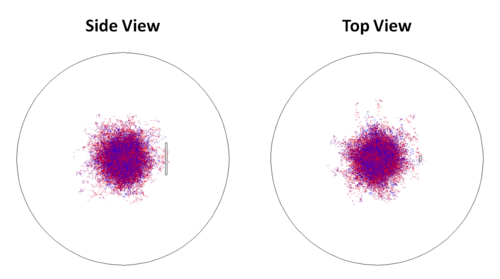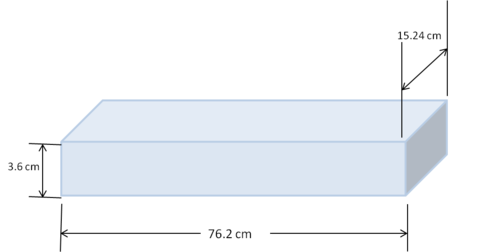Difference between revisions of "2-Neutron Correlation"
Jump to navigation
Jump to search
| Line 12: | Line 12: | ||
<math>\Delta \Omega = 4\pi*\frac{hits}{hits + misses}</math> | <math>\Delta \Omega = 4\pi*\frac{hits}{hits + misses}</math> | ||
| − | ; Results : 1E9 Neutrons generated<br /> | + | ; Results |
| + | : 1E9 Neutrons generated<br /> | ||
* 8618287 neutrons hit the detector | * 8618287 neutrons hit the detector | ||
* <math>\Delta \Omega = 0.108 Sr</math> | * <math>\Delta \Omega = 0.108 Sr</math> | ||
| − | ; As a test to verify our results : We change the detector size to 2cm by 2cm and used 1E9 neutrons again | + | ; As a test to verify our results |
| + | : We change the detector size to 2cm by 2cm and used 1E9 neutrons again | ||
* 32061 neutrons struck the detector | * 32061 neutrons struck the detector | ||
* <math>\Delta \Omega = 0.0004 Sr</math> | * <math>\Delta \Omega = 0.0004 Sr</math> | ||
| − | ; And, as a second test to verify our results : We change the detector size to 1cm by 1cm and used 1E9 neutrons again | + | ; And, as a second test to verify our results |
| + | : We change the detector size to 1cm by 1cm and used 1E9 neutrons again | ||
* 7965 neutrons struck the detector | * 7965 neutrons struck the detector | ||
* <math>\Delta \Omega = 0.0001 Sr</math> | * <math>\Delta \Omega = 0.0001 Sr</math> | ||
Revision as of 20:56, 29 May 2012
Big Detector Solid Angle Calculations
- MCNPX Simulation
- 14 MeV neutron source, emitted isotropically ()
- Detector placed 1m away from source
- face of the detector is 15.24cm x 76.2cm, and 3.6cm deep
The solid angle can be found from the number of particles hitting the detector as:
- Results
- 1E9 Neutrons generated
- 8618287 neutrons hit the detector
- As a test to verify our results
- We change the detector size to 2cm by 2cm and used 1E9 neutrons again
- 32061 neutrons struck the detector
- And, as a second test to verify our results
- We change the detector size to 1cm by 1cm and used 1E9 neutrons again
- 7965 neutrons struck the detector
- Now, what neutron singles rate into the detector should correspond to 1 fission per pulse?
- 1 fission per pulse corresponds to 2.3 neutrons/fission = 2.3 neutrons/pulse
- The number of neutrons hitting the detector per pulse is found as
- The number detected per pulse can be found as
- where is the detector efficiency

